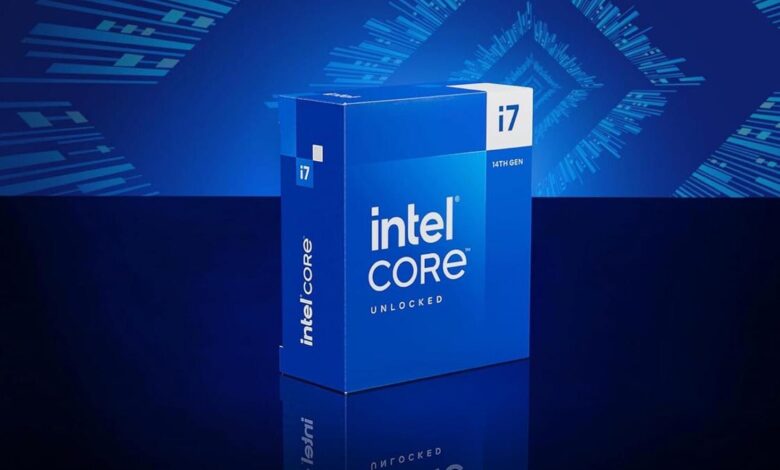Intel chip bug FAQ: Which computers are affected, how to get the patch, and everything else you need to know


[UPDATED August 15, 2024]
Over the past few months, consumers with desktops running 13th or 14th Gen Intel Core Raptor Lake CPUs have affected by incidents and instability issues.
Although a fix is currently being rolled out and Extended warranty for affected processorsinconvenience and confusion for affected customers continues, as does damage to Intel’s reputation.
Also: How to install Windows 11 the way you want (and avoid Microsoft’s restrictions)
Bottom line: While Intel does communicate through public relations and community channels, these messages are primarily aimed at true enthusiasts; very little information is conveyed to mainstream customers.
I’ve talked to a number of Raptor Lake users who, until recently, were unaware of these issues, and one user has been in constant conflict with the company that sold them the computer because tech support believes the damage was caused by overclocking.
Here, I’ll summarize what consumers using desktop PCs running 13th or 14th Gen Intel Core Raptor Lake CPUs need to know and what they need to do.
Here is the list provided by Intel. According to the company, only the desktop version is affected, not the mobile/laptop version:
| 13th Gen Intel Core | 14th Gen Intel Core |
|
i9-13900KS |
i9-14900KS |
|
i9-13900K |
i9-14900K |
|
i9-13900KF |
i9-14900KF |
|
i9-13900F |
i9-14900F |
|
i9-13900 |
i9-14900 |
|
i7-13700K |
i7-14700K |
|
i7-13700KF |
i7-14700KF |
|
i7-13790F |
i7-14790F |
|
i7-13700F |
i7-14700F |
|
i7-13700 |
i7-14700 |
|
i5-13600K |
i5-14600K |
|
i5-13600KF |
i5-14600KF |
Also: If Intel doesn’t come up with a product that can beat Qualcomm soon, it’s game over for x86 PCs
Intel describes them as instability issues “typically seen when applications repeatedly crash and hang.”
This depends on how you buy your computer or processor:
- Boxed processor (you purchased the processor for a computer you built yourself) – Contact Intel Customer Support.
- Tray Processor (you are a system builder and buying multiple chips) – Contact your place of purchase.
- 13th/14th Gen Intel Core Desktop Systems from OEM/System Integrator (you purchased a pre-built PC) – Contact your system manufacturer.
Intel has extended the warranty on affected processors by two years.
Who will pay for the cost of replacing the processor on a system you build yourself or a smaller system builder? Intel remains silent.
Also: Microsoft is changing the way it delivers Windows updates: 4 things you need to know
Likewise, there is no guidance for consumers who paid for repairs thinking the problem was related to factors like improper installation or overclocking.
The patch — dubbed “microcode update 0x129” — prevents high voltages from being sent to the core and may prevent both crashes and instability, as well as prevent CPUs from being damaged by high voltages.
It’s important to note that this update will not fix damaged hardware. If your PC crashes or becomes unstable due to this issue, your CPU will be damaged.
Also: How to Switch from Microsoft Account to Local Account and Tips to Avoid Microsoft Account
However, Intel said it is investigating possible “mitigations” for systems that have shown symptoms and will have more information by the end of August. However, Intel continues to recommend that affected users exchange their processors under warranty.
This is where things get messy.
It was assumed that Intel and motherboard manufacturers would use Windows Update to push the patch to affected systems. However, users will now need to download and install a BIOS update from the relevant motherboard manufacturer. To do this, you need to know which motherboard you have (this guide will help you identify your hardware), download the patch for the appropriate motherboard and install it properly.
As of this writing, Gigabyte, MSI And Asus has published information on BIOS updates and I can find occasional updates from other manufacturers like ASRock. Keep an eye on the download pages and support forums.
Yes, Intel has announced List of recommended security settings. If you want to tweak your motherboard before patching — and assuming your motherboard allows it — these are the settings you should use.
Intel default power delivery profile settings for 13th and 14th Gen Intel Core desktop processors (K/KF/KS)
Intelligence
It’s hard to say.
Intel is confident that this patch will address the issue and claims that the microcode has little to no negative performance impact.
But I’ve seen some reports that the new microcode update does less good, but also forces the CPU to run at higher temperatures and increased power. The microcode update also forces the CPU to thermally throttle — limiting performance when temperatures get too high — which can also shorten the life of the chip.
I’ve seen suggestions that users should be more careful when tuning their computers running these processors. For example, the YouTube channel YES City Technology Suggest rolling back to the earliest stable BIOS update, manually setting the CPU speed to 5.2 GHz, disabling E-Core, setting the VDD_CPU and VDD_IMC voltages to 1.3 V, then setting the RAM speed to the point where everything is stable at that reduced VDD_IMC voltage.
Do not!
While the update won’t prevent unlocked chips from being used, Intel recommends users “proceed with caution when overclocking their desktop processors, as overclocking may void warranties and/or impact system health” and also recommends “customers with 13th and 14th Gen Intel Core desktop processors should use Intel default settings“
But testing has shown that choosing a setting other than Intel’s default can causes harmful voltages to be sent to the processor.
ARE NOT.
Tweaking the settings to anything other than Intel’s new defaults — for example, choosing the motherboard manufacturer’s defaults — could potentially cause high voltages to be sent to the CPU, damaging it. It appears that for now, the only safe setting to use on updated systems is Intel’s defaults.
According to Intel’s investigation, future products are not affected by this issue.



